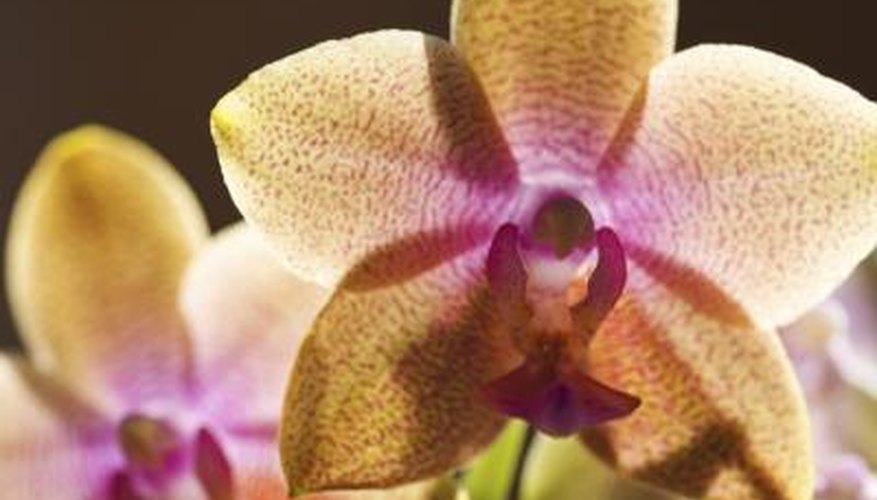Many orchids grow wild in the treetops without any help from gardeners. While orchids don't require deadheading to rebloom, if you are growing orchids in your home you'll likely want to deadhead the orchid yourself. Not only will the plant look prettier, but removing the dead portions ensures the plant can focus its energy into producing a new bloom.
Facts
In the wild, orchid blooms fall off the plant with normal wind, decay and help from insects and birds. Since your home's normal conditions limit the likelihood of the bloom falling off the plant quickly on its own, your indoor potted orchid will do best with a deadheading.
Instructions
Wait until the plant's bloom has completely withered and has turned browned. Grip the stem below the spent bloom and gently pull upward, taking the bloom with you. Discard the dead bloom in the trash and inspect the area for any dropped or broken pieces. Parts of the plant left behind on the potting mix may mould and bring disease to the plant so they must be removed.
- Wait until the plant's bloom has completely withered and has turned browned.
- Parts of the plant left behind on the potting mix may mould and bring disease to the plant so they must be removed.
Alternate Methods
If you aren't comfortable pinching off the bloom, trim off spent blooms with a pair of sterilised scissors, making the cut several inches below the original bloom. Seal up the stem wound with melted candle wax to limit the likelihood of bacterial infection, suggests the Beautiful Orchids website.
After-Care
Resume caring for your orchid as normal, giving it adequate light and moisture as needed for your specific orchid variety. Removing the bloom doesn't ensure a quick re-blooming; some orchids bloom only once a year while others bloom several times a year.
